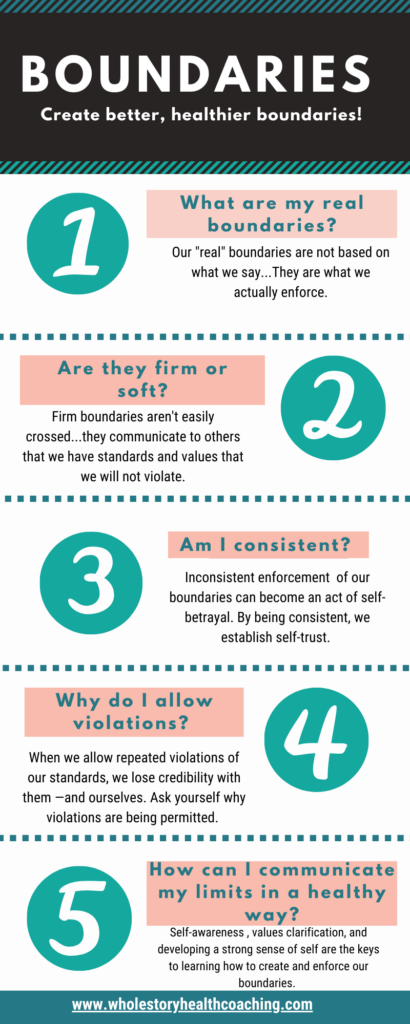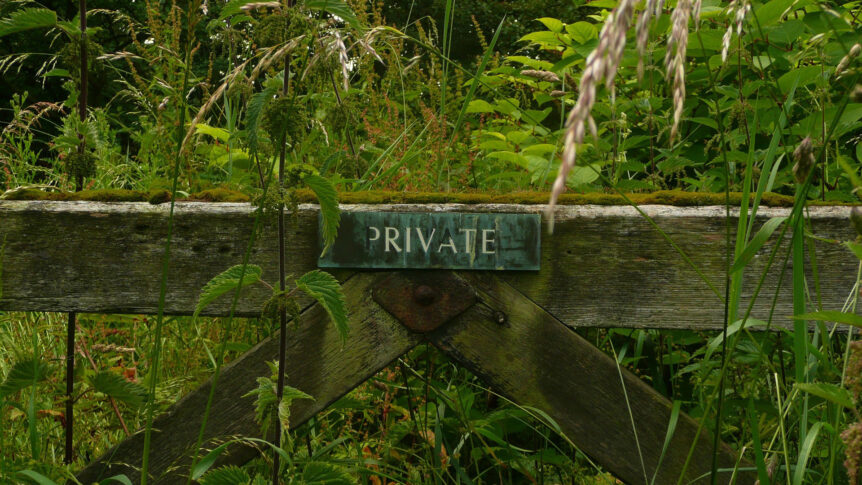Building healthy boundaries can be a trial and error process. Because we are unique in our mental, emotional, and spiritual makeup, we each have our own perspectives that influence our limits and what we are able to tolerate.
Sadly, some lack a true understanding of what it takes to form and maintain healthy boundaries. It was definitely that way for me. Although I’d heard people talk about needing to have them, I wasn’t quite sure what it really meant…or how to define them for myself.
Boundaries Can Vary
Keep in mind that boundaries can be tricky. Different people and circumstances may require differences in how we approach them. Our boundaries may even expand or shrink, depending on the person we are interacting with.
For example, there are people with whom I have put up very strong boundaries. There are those, with whom, I can relax . I have friends that relax their boundaries with me and people that put up stronger ones. I understand and accept both types.

Invisible Fences
A word to the wise: not all boundaries will be verbally communicated. There are people that go into a type of survival mode and withdraw when mentally or emotionally uncomfortable. Their instinct is to get to a place of “inner” safety and avoid what may be perceived as confrontational.
Learning to recognize this tendency in ourselves and others can create an opportunity for both parties to grow together in mutual understanding, respect, and trust.
Over time, I have grown to understand that we each have a right and a reason behind our reactions and limits. For that reason, I have learned (sometimes painfully) not take other people’s boundaries personally. Though it can be difficult, we should try respect other people, as we want to be respected.
Build Your Boundaries…Not Walls
Healthy boundaries help to prevent us from building emotional walls. Although these walls give us a sense of safety, they come from an unhealthy place and are a reaction to a person or circumstance.
It is also important to understand that boundaries aren’t just for others— we need them for ourselves too. Think of them like a house. We don’t just build a house to keep people out of our personal space. We build a house to have somewhere to live. Within that living space, we either allow or deny access to the inside of our home. When we live within our boundaries, people have an understanding that they need permission to enter.
10 Keys to Building Healthier Boundaries
Constructing healthy and consistent boundaries is ongoing. Sometimes, it’s trial and error. Sometimes, we end up relying on our emotional walls. At other times, we are inconsistent or unclear in our communication of them.
Use the following list as a guide toward building and enforcing healthier boundaries with yourself and others.
- Understand Why We Need Them Remember…boundaries allow us to create and uphold stability in our lives. They help other people to understand how to interact with us in a way that is conducive to our overall health, wellbeing, and the health of our relationships. As important as they are for us to define and have in place, we have to keep in mind that establishing boundaries is a fluid process…an art. There are no hard and fast rules.
- Ask the Right Questions Now that we know that boundaries are basically our limits about what we consider to be acceptable, we need to ask the right questions of ourselves. For example, what:
- are my current limits?
- do I consider to be acceptable?
- are my non-negotiable limits?
- interferes with establishing, enforcing, and maintaining my boundaries?
These questions may be difficult to answer, initially. However, it is worth taking the time to explore the ins and outs of our boundaries. We need to understand what they are, when to use them, and with whom to use them. This knowledge can prevent us from putting ourselves in a position of unnecessary vulnerability.
- Start off on the Right Foot The importance of establishing your boundaries in the beginning of a friendship or relationship cannot be overstated. It’s a lot easier to start off in the right direction than it is to change course. People can become so used to having their way with us, our boundaries feel like a violation or an insult to them. Having boundaries in place prevents the need for and consequences of unhealthy emotional reactions.
- Watch Out for Violators Be aware that there will always be people who will try to cross the lines you’ve drawn — people that will try to manipulate you, reject you, or even threaten to abandon you— if you don’t cross your own boundaries or allow them the access they seek. But, that’s not always a bad thing.
In actuality, understanding who is willing to violate our boundaries gives us great insight into the personalities of those close to us. Sadly, friends and families are the usual suspects. Since close relationships seem to be the hardest to regulate, the more familiar and comfortable people are with us, the more leeway they can sometimes expect or demand. Additionally, the closer we feel to them, the more leeway we are likely to give. Unfortunately, what we are actually doing is giving away our power.
- Develop an Awareness of Self-Violation One purpose of establishing boundaries is to offer some form of protection against things or people that would otherwise harm us, right? But, it isn’t always that simple. Sometimes, we draw a line in the sand to establish our boundaries, only to violate them ourselves. We self-sabotage. In my past, opposition to my “rules” caused me to either move or remove the boundary completely. Fearing that I would push people away, I continued to grant permission, instead of revoking their access.
- Pay Attention to Invisible Boundaries The concept of invisible boundaries was something I learned from a therapist. I explained to her how, for no apparent reason, I shut down with certain people. She told me that, on some level, my boundaries had been violated. This opened up a world of exploration for me! I learned that if I paid attention to when this happened, I could understand myself and better understand my boundaries. Especially, the unspoken ones.
- Preset Limits Boundaries, in contrast to emotional walls, are put in place prior to conflict, not as a reaction to it. Boundaries:
- allow us to create and uphold stability in our lives.
- help other people to understand how to interact with us
- represent our values, priorities and our sense of self.
- are proactive.
- are not a reaction of or fueled by negative emotions.
Knowing where we stand, ahead of time, can help to prevent boundary violations by others. It may even deter us from inviting people into our lives that will not respect us.
Using preset limits helped to prevent me from getting into situations that would be overwhelming or destructive. Understanding what I will and will not do (and being able to stick to it) reinforces my commitment to myself.
- Enforce the Limits Identifying and enforcing healthy boundaries was a foreign concept to me. Taking a firm stance when someone closed in on them, crossed, and went beyond them felt impossible. But, it wasn’t. Enforcing our boundaries leads to better outcomes overall.When our boundaries are not upheld, we can become bitter, angry and resentful. We can even begin to act in passive-aggressive or manipulative ways as a defense. Of course, this is no way to maintain healthy relationships.
- Commit to Yourself When we stand up for ourselves, we are keeping a commitment. When we break commitments to ourselves, we learn not to trust our own judgment. We lose faith in our decision making capabilities.When we don’t establish or enforce limits, on our behalf, how can we expect others to follow suit?
- Sink or Swim The concept of boundaries can be like wading into the ocean. We may not realize how far we’ve gone (or allowed someone to go) until we are no longer able to keep our head above water. While trying to stay afloat, we compromise ourselves. We allow others to continue taking us into deeper (mental and emotional) waters.
As you can see, building healthy boundaries is not a simple process. It takes time, effort, patience and self-awareness.
What is your process for defining and enforcing your boundaries?

Let’s connect…



